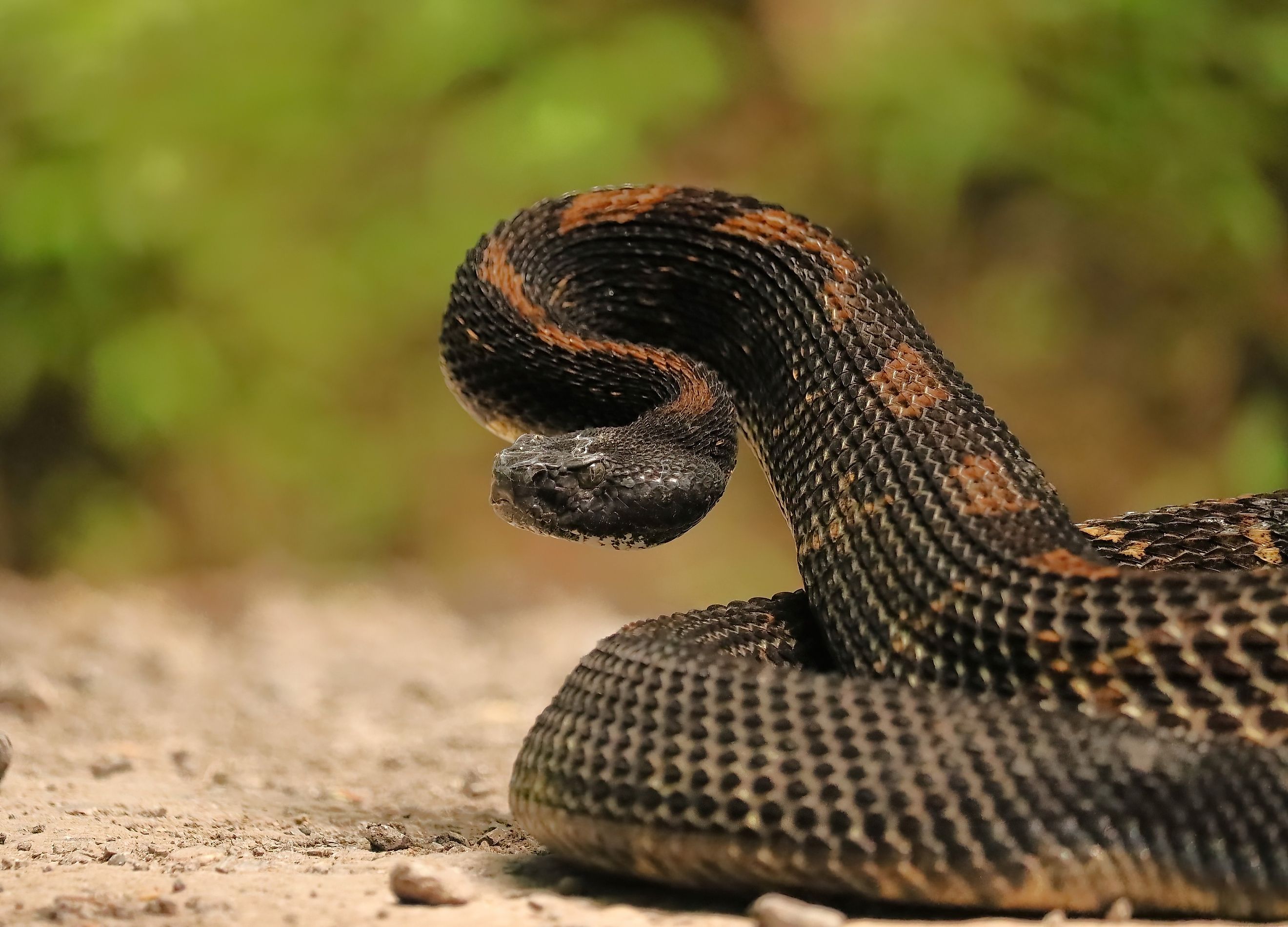
7 Most Rattlesnake Infested Areas in Kentucky
Kentucky's diverse landscapes offer plenty of outdoor activities, from hiking and camping to exploring its beautiful waterways. While the state's natural beauty attracts many adventurers, it's important to be aware of rattlesnakes when venturing into the wild. There are a few areas in Kentucky known for rattlesnake activity. Though these venomous snakes play a crucial role in the ecosystem and sightings are rare, knowing where they live can help reduce the risk of bites.
Kentucky is home to 33 snake species, including two rattlesnakes: the timber rattlesnake and the pygmy rattlesnake. Both species are venomous and play vital roles in controlling rodent populations. Timber rattlesnakes live in dense forests, rocky slopes, and near water, while pygmy rattlesnakes, rarer than the others, are mainly in southern Kentucky, often found in forest edges, wetlands, and brushy areas. Here are some of the rattlesnake-infested areas in Kentucky.
Lake Barkley
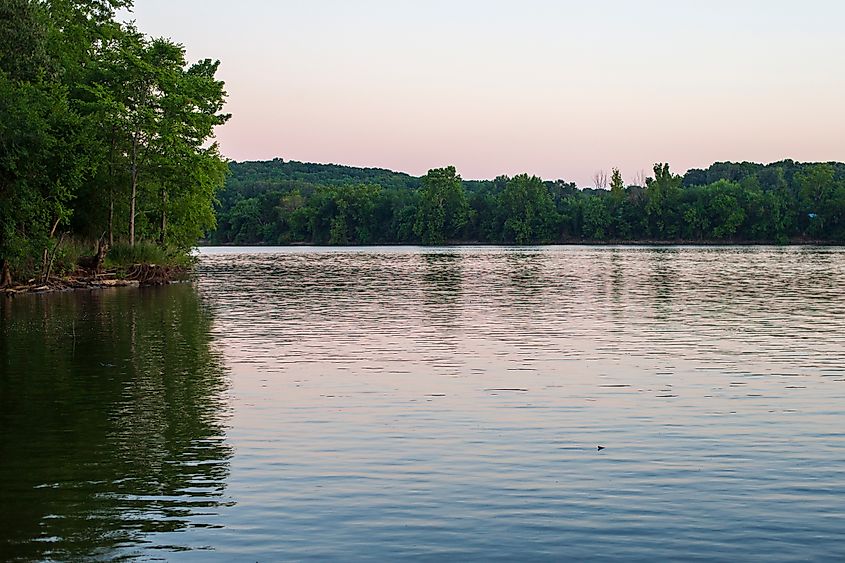
Lake Barkley, located in western Kentucky, spans over 58,000 acres and is surrounded by thick forests and rocky areas, providing a suitable habitat for various snake species. The lake’s popular activities include hiking, fishing, and boating. The area has several marked trails, such as the Lake Barkley Blue Spring Trail and the Lake Barkley Wilderness Trail, where snake sightings are more common during warmer months.
Lake Barkley is also home to several types of snakes, including Kentucky’s most venomous snakes, such as timber rattlesnakes. They’re often spotted around trails and wooded spots, and they thrive in this region due to the mix of forested and open spaces near water. Timber rattlesnakes can grow up to 60 inches in length. They have a distinctive rattle at the end of their tail, dark crossbands on a yellowish, gray, or brown body, and a triangular-shaped head. Their venom contains hemotoxins that can damage tissues and disrupt blood clotting. Bites, though rare, require immediate medical attention. Other common snake species in the area include northern watersnakes, eastern garter snakes, northern copperheads, cottonmouths, black rat snakes, and western Kentucky rat snakes.
Land Between the Lakes National Recreation Area
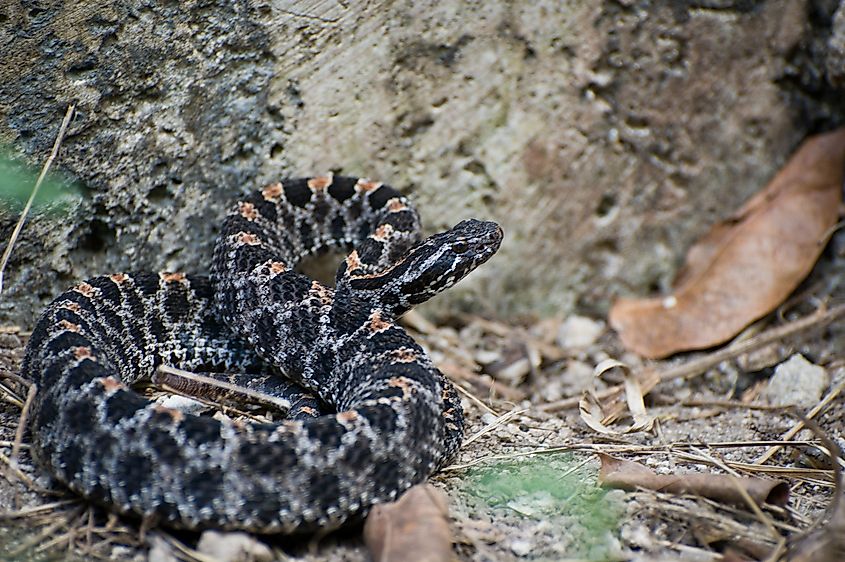
The Land Between the Lakes National Recreation Area covers 170,000 acres of forests, wetlands, and open fields located between Lake Barkley and Kentucky Lake. Visitors can enjoy hiking, wildlife viewing, and camping. The Pisgah Point Camping Area & Boat Ramp is a popular area where snake sightings are possible. This region is known for housing both timber rattlesnakes and pygmy rattlesnakes.
The pygmy rattlesnake is the rarest venomous snake in Kentucky. Growing up to 24 inches, it has a slender body with dark blotches on a gray or reddish background. In addition to snakes, the area is home to deer, elk, and a variety of bird species. The diverse ecosystem makes it a hotspot for both reptiles and mammals.
Daniel Boone National Forest
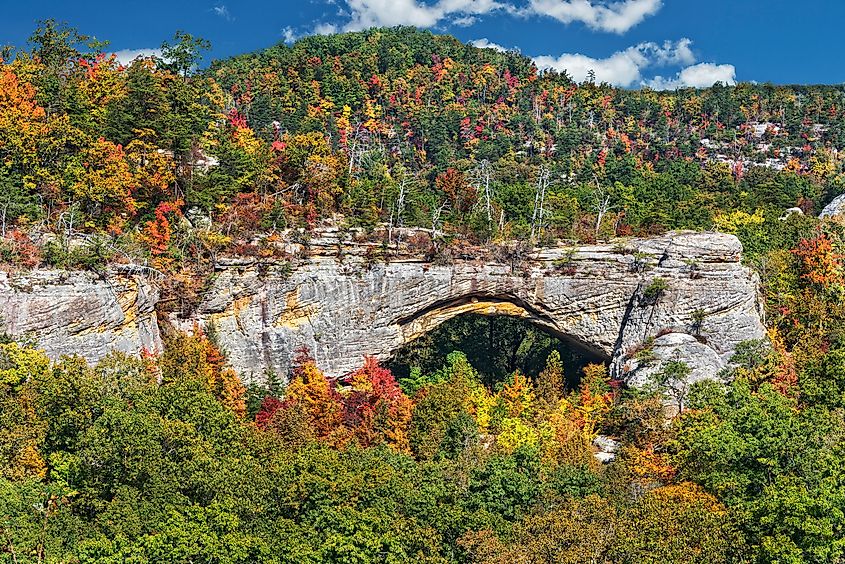
Daniel Boone National Forest in Kentucky is a massive area covering over 700,000 acres of land filled with rivers, cliffs, and lush greenery. Visitors can enjoy various activities, such as hiking, camping, fishing, rock climbing, and horseback riding. With over 600 miles of trails, you can explore scenic views, waterfalls, and natural arches. Some of the most popular trails include Double Arch, Courthouse Rock, Auxier Ridge Loop, the Rock Bridge Trail, and the Sheltowee Trace Trail, which stretches over 300 miles.
With so many outdoor areas full of people, knowing which rattlesnakes live in the region is essential. Timber rattlesnakes are drawn to the forest’s abundant prey, including small mammals and birds. Though they are generally docile and prefer to avoid confrontation, their venom contains both hemotoxins and neurotoxins, making their bite potentially life-threatening. Copperheads, while also present, are less dangerous and more commonly encountered near woodpiles and stone walls.
Kentucky Lake
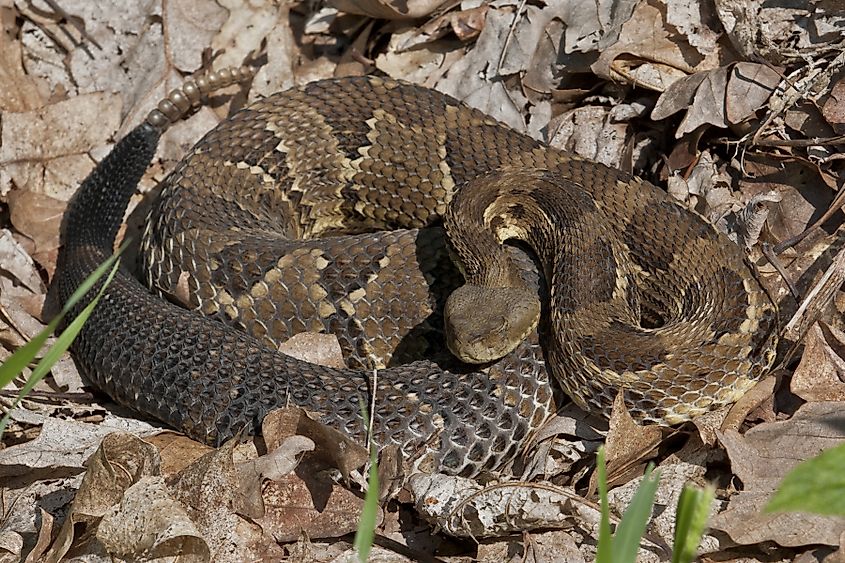
Kentucky Lake, the largest man-made lake in the state, spans over 160,000 acres and extends into Tennessee. It is on the western end of the Land Between the Lakes National Recreation Area and a prime location for outdoor enthusiasts, surrounded by thick forests and recreational spots. Boating and fishing are top attractions, with expansive waters perfect for both leisurely cruises and serious anglers.
Hikers exploring trails like the Central Hardwoods Scenic Trail should watch for timber rattlesnakes basking on sunny outcrops or coiled under shaded rocks. While these snakes are generally non-aggressive, their venom is highly potent and requires prompt medical attention if bitten. Non-venomous snakes, such as the slender queen snake, are also common near the lake’s waterways, but the timber rattlesnake remains the primary concern for visitors.
Lake Cumberland
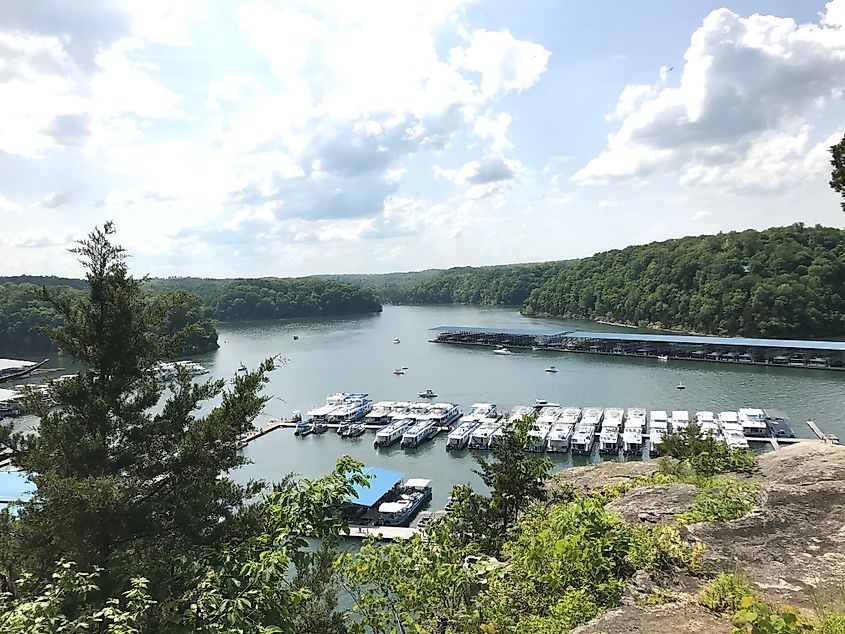
Lake Cumberland, a popular destination in southern Kentucky, covers over 50,000 acres with rugged cliffs, wooded shores, and hidden coves. Its vast shoreline and crystal-clear waters make it a top destination for boating, fishing, and water sports. The lake is also a great spot for swimming, especially at designated beaches and marinas. For those who prefer staying on land, Lake Cumberland State Resort Park offers plenty of hiking and biking trails that showcase stunning views of the lake and surrounding forest. The Wolf Creek Dam trail is a common place where visitors might find snakes.
Timber rattlesnakes are often spotted basking on rocky ledges or coiled under logs near trails. Their characteristic rattle serves as a warning to intruders, but they are unlikely to strike unless provoked. Visitors should remain cautious, especially during the warmer months when snake activity peaks. In addition to timber rattlesnakes, non-venomous species like the black rat snake and eastern garter snake are common near the lake’s edges. While these snakes are harmless, their presence highlights the ecological diversity of the Lake Cumberland region.
Big South Fork National River and Recreation Area
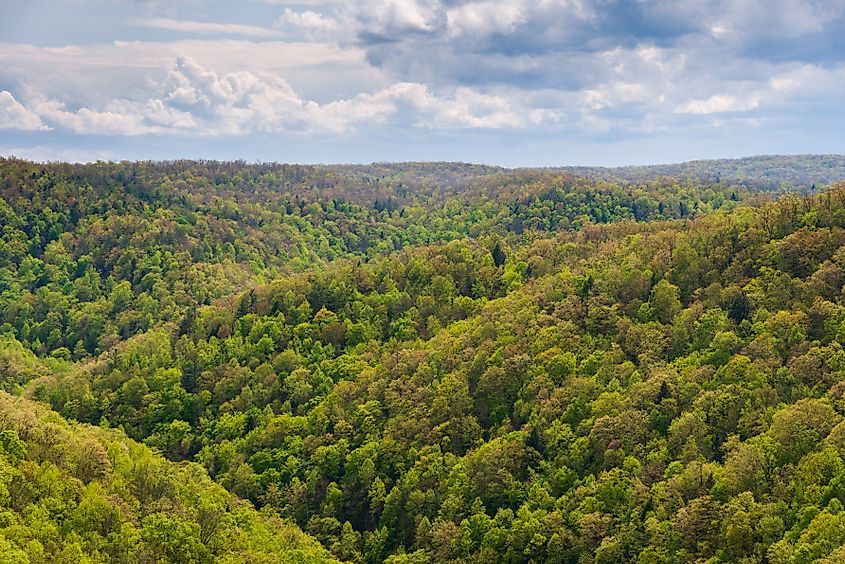
The Big South Fork National River and Recreation Area covers 125,000 acres along the Kentucky-Tennessee border, making it a great place for outdoor lovers. The area is full of deep gorges, towering sandstone cliffs, and thick forests, with more than 100 miles of hiking trails for all skill levels—some easy, others more challenging. Camping is also a favorite pastime, with several campgrounds and backcountry sites allowing visitors to immerse themselves in nature.
The Big South Fork is home to timber rattlesnakes and copperheads, both shy but venomous. Hikers have spotted the most snakes on the Angel Falls Trail, a three-mile hike that takes close to one hour to complete. Timber rattlesnakes in this region are particularly active during late spring and summer when they hunt for prey and bask on sunlit rocks. Their camouflage allows them to blend seamlessly into their surroundings, making them difficult to spot. Copperheads are also present in the area, but they are less common in the rocky terrains favored by timber rattlesnakes.
Bernheim Arboretum and Research Forest
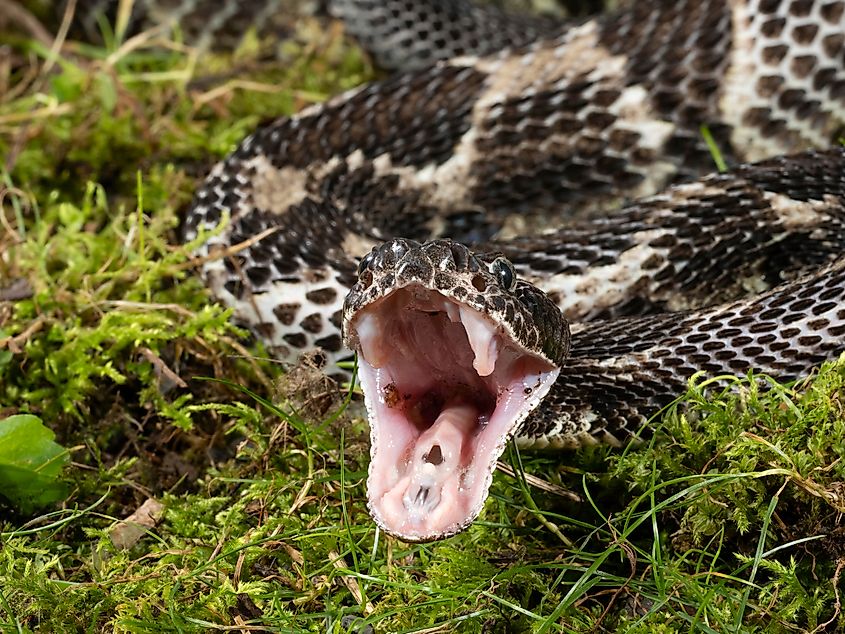
Bernheim Arboretum and Research Forest, covering over 16,000 acres in central Kentucky, is a popular spot for hiking, wildlife watching, and enjoying nature. The forest has a variety of landscapes, including open meadows, wooded paths, and rocky areas, making it a perfect home for timber rattlesnakes and copperheads.
Unlike other locations, Bernheim’s rattlesnakes are often seen along sunny trails like the Forest Giants Trail, where they bask in open areas. Timber rattlesnake venom, while dangerous, has contributed to medical research, including the development of antivenoms and pain treatments. Visitors should remain alert during warmer months when snake activity increases, particularly near rocky outcrops and sunny clearings.
Conclusion
Exploring Kentucky’s beautiful lakes and forests is a great way to connect with nature. Still, it’s important to stay aware of your surroundings, especially in areas where rattlesnakes may be found. While snake encounters aren’t common, knowing where they prefer to hide helps keep your outdoor adventures safe and fun. Timber rattlesnakes and the rarer pygmy rattlesnakes play an essential role in the ecosystem by keeping rodent populations in check. You can reduce the chance of encountering a snake by following simple safety tips—like staying on marked trails, wearing protective clothing, and staying alert.











